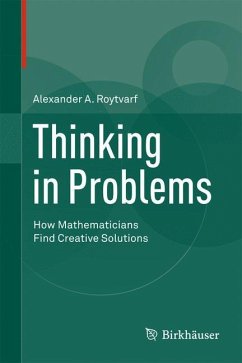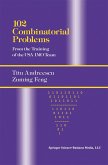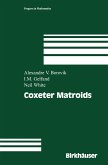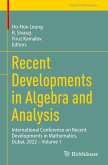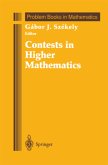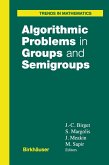This concise, self-contained textbook gives an in-depth look at problem-solving from a mathematician's point-of-view. Each chapter builds off the previous one, while introducing a variety of methods that could be used when approaching any given problem. Creative thinking is the key to solving mathematical problems, and this book outlines the tools necessary to improve the reader's technique.
The text is divided into twelve chapters, each providing corresponding hints, explanations, and finalization of solutions for the problems in the given chapter. For the reader's convenience, each exercise is marked with the required background level. This book implements a variety of strategies that can be used to solve mathematical problems in fields such as analysis, calculus, linear and multilinear algebra and combinatorics. It includes applications to mathematical physics, geometry, and other branches of mathematics. Also provided within the text are real-life problems in engineering and technology.
Thinking in Problems is intended for advanced undergraduate and graduate students in the classroom or as a self-study guide. Prerequisites include linear algebra and analysis.
The text is divided into twelve chapters, each providing corresponding hints, explanations, and finalization of solutions for the problems in the given chapter. For the reader's convenience, each exercise is marked with the required background level. This book implements a variety of strategies that can be used to solve mathematical problems in fields such as analysis, calculus, linear and multilinear algebra and combinatorics. It includes applications to mathematical physics, geometry, and other branches of mathematics. Also provided within the text are real-life problems in engineering and technology.
Thinking in Problems is intended for advanced undergraduate and graduate students in the classroom or as a self-study guide. Prerequisites include linear algebra and analysis.
From the reviews:
"The problems are enhanced by introductory summaries, overviews of notations and definitions, historical comments, and bibliographic references. The text's sequential approach will help developing mathematicians both expand their understanding of advanced mathematics and improve their problem-solving abilities ... . Summing Up: Recommended. Upper-division undergraduates, graduate students, and researchers/faculty." (J. Johnson, Choice, Vol. 51 (2), October, 2013)
"This marvelous collection of problems represents an interesting and valuable resource for students who prepare various types of mathematics contests. ... very strongly recommends this book to all undergraduate and graduate students curious about elementary mathematics. Teachers would find this book to be a welcome resource, as will contest organizers." (Teodora-Liliana Radulescu, zbMATH, Vol. 1270, 2013)
"The problems are enhanced by introductory summaries, overviews of notations and definitions, historical comments, and bibliographic references. The text's sequential approach will help developing mathematicians both expand their understanding of advanced mathematics and improve their problem-solving abilities ... . Summing Up: Recommended. Upper-division undergraduates, graduate students, and researchers/faculty." (J. Johnson, Choice, Vol. 51 (2), October, 2013)
"This marvelous collection of problems represents an interesting and valuable resource for students who prepare various types of mathematics contests. ... very strongly recommends this book to all undergraduate and graduate students curious about elementary mathematics. Teachers would find this book to be a welcome resource, as will contest organizers." (Teodora-Liliana Radulescu, zbMATH, Vol. 1270, 2013)

